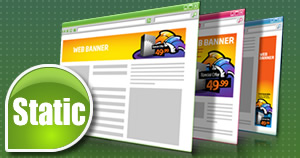
This blog post was updated on 2 July 2021.
The majority of students are highly influenced by information they find online when choosing which university to study at. For this reason, it is vital that online PPC advertising plays an important role in your marketing strategy.
At Webcertain, we have extensive experience of working with various clients in the education sector from around the world.
Based on these experiences, we have put together a guide on how to go about PPC advertising in the education sector, and this blog post pulls out some of the key points. Without further ado, let’s delve into our three top tips.
1. Calls-to-action
Make sure you use appropriate calls-to-action in your PPC ads. “Learn more”, “read more”, “request information” and “get started” are all very successful calls-to-action in the education sector. In contrast, “sign up” and “buy now” are unlikely to produce very positive results. Be aware that some calls-to-action are more successful in some markets than others. For example, “request information” and “read more” work best in Chinese-speaking markets and “sign up” and “learn more” work best in Spanish-speaking markets. Make sure to conduct research into the best calls-to-action for each market that you target.
2. International search engines
Make sure that you are running your PPC ads on the most appropriate search engine in each target market. Google is the dominant search engine in most countries, but not all. In China, you should focus your efforts on Baidu, whilst in Russia you should be on Yandex, and in South Korea you should consider advertising on Naver. Be aware that advertising specifications (e.g. character limits and match types) are different on the different search engines, so make sure you research these beforehand.
3. Research each target market
Make sure you conduct research not only into the digital landscape of your target market, but also the real-life factors that will have an impact. Keep yourself updated on any external factors which might affect your campaigns – e.g. country bans which might affect the flow of students from certain countries, or any local restrictions in place with regards to advertising (and most likely, the use of specific words).
I hope this has given you a useful introduction to international PPC advertising in the education sector. For more in-depth information, you can read the full guide here. The guide covers the following points in detail:
- do your research and get to know your market
- identify your audience and define who you are targeting
- bear seasonality in mind
- have rich and informative content
- localise, localise, localise
- be aware of local search engines – including a case study
- make your ads relevant for the audience
- make the most of ad extensions
- make the usability of your website top-notch
- do not forget mobile
Anna Giulia Novero
Latest posts by Anna Giulia Novero (see all)
- 3 tips for PPC advertising in the education sector - November 29, 2018
- Marketing in travel and tourism - June 6, 2018
- 3 things to know about digital marketing in Africa - May 31, 2018






